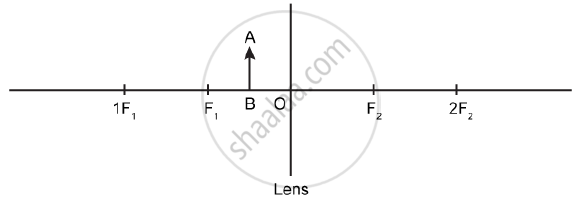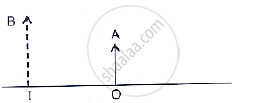Advertisements
Advertisements
Question
In sunglasses, both of its surfaces are curved, yet their behaviour is neither like a convex lens nor like a concave lens. State the reason.
Solution
In sunglasses, the outer surface is convex and the inner surface is concave, hence the power of one surface is positive and that of the other is negative. By making both these powers equal, the effective power of the lens becomes zero. Hence, these lenses are simply like a thin glass having no power, plus or minus.
APPEARS IN
RELATED QUESTIONS
Draw a ray diagram to show the formation of image in the above situation
An object of height 4.0 cm is placed at a distance of 30 cm from the optical centre 'O' of a convex lens of focal length 20 cm. Draw a ray diagram to find the position and size of the image formed. Mark optical centre 'O' and principal focus 'F' on the diagram. Also find the approximate ratio of size of the image to the size of the object.
An object AB is placed between O and F1 on the principal axis of a converging lens as shown in the diagram.

Copy the diagram and by using three standard rays starting from point A, obtain an image of the object AB.
You eye contains a convex lens. Why is it unwise to look at the sun?
An object is placed 20 cm from (a) a converging lens, and (b) a diverging lens, of focal length 15 cm. Calculate the image position and magnification in each case.
The given below figure shows an object OA and its image IB formed by a lens. State three characteristics of the image.

A convex lens forms an image of an object equal to the size of the object. State two more characteristics of the image.
The image obtained while finding the focal length of convex lens is ....................
(a) What type of a lens can be used as a magnifying glass?
(b) Show by a ray diagram the formation of a real image by simple magnifying lens.
Distinguish between:
Concave lens and Convex Lens
